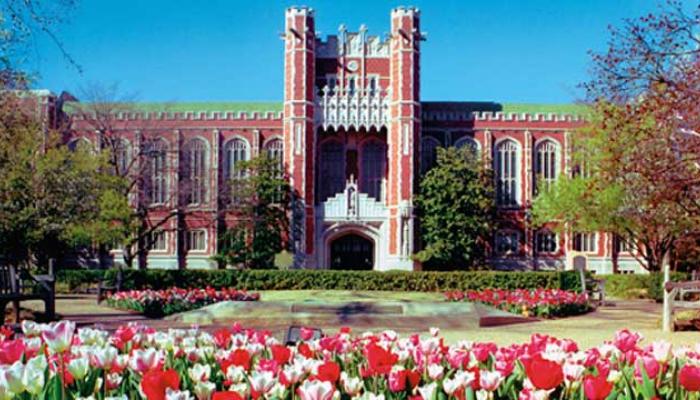Bizzell Memorial Library

Visitor Information
A reprise of Galileo's World is being held at Bizzell Memorial Library until May 2018. Visitors can view the Leaning Tower of Pisa in the main entry of the library, while the reprise and rotating displays can be viewed in the newly renovated special collections exhibit gallery on the 5th floor of the Bizzell Memorial Library.
- The exhibit is available when the History of Science Collections is open.
Exhibits
Galileo’s controversy over the comets illustrates how difficult it can be to implement novel research methods in science.
Science has traditionally played a key role in cultural exchange. Johann Schreck, one of Galileo’s friends a member of the Academy of the Lynx, went to China and taught astronomy.
When Galileo pointed his telescope toward the moon, he discovered rugged and mountainous landscapes similar to Earth’s terrain. In a short treatise, Galileo reproduced his observations through detailed illustrations.
Galileo Today examines how the concepts pioneered by Galileo and his contemporaries have shaped our understanding of research and exploration.
In the Republic of Venice, Galileo’s day-to-day work as a professor of mathematics was that of a scientist-engineer. City officials and notable individuals called upon his expertise to solve civic, military and nautical problems in engineering.
Music and astronomy were taught as complementary sciences, and both were understood as subdisciplines of mathematics in Galileo’s world. The harmonious motions of the planets created the music of the spheres.
Sometimes in harmony, sometimes in conflict, science and religion interact in diverse and historically contingent ways. The Galileo Affair turns out to be much more complicated than a simple conflict of science and religion.
In 1638, Galileo published his masterwork of physics, Discourse on Two New Sciences. The two sciences were tensile strength and mechanics, the study of machines in motion.
Upcoming Events
Location Map
















